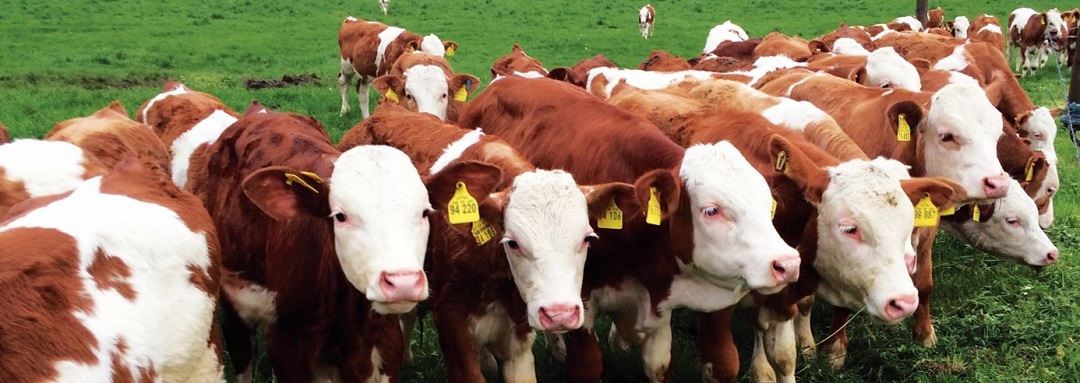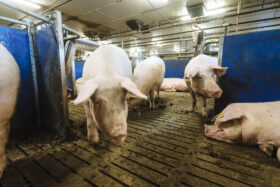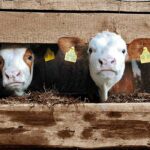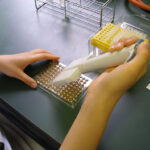By Judith Schmidt, Product Manager On Farm Solutions
The average pregnancy rate for dairy cows has declined over the past decades. But why is my cow not getting pregnant? Is it because of feeding? These are questions we ask ourselves when things do not quite work out with the offspring in the cowshed. Economic success in the cow barn is closely related to the successful reproduction of our cattle herd.

The maintenance and possible improvement of fertility are becoming increasingly important issues for farm productivity. Infertility is still one of the main reasons for culling on dairy farms. When farmers decide to cull a cow after a few unsuccessful inseminations, they often ask themselves whether this could not have been prevented. There is no “all-encompassing” solution for achieving an optimal fertility rate, which ultimately requires excellent management. Relevant factors include oestrus monitoring and insemination timing, genetic conditions, feeding, hygiene, and climate.
How can I tell if a cow is in heat?
A cow behaves differently than usual during oestrus. She is restless and walks around more. A cow in heat stands next to other cows – head to tail. Sie also quarrels with her herd mates or sniffs at the shame of the other cows. Fertility in cows decreases during late winter and spring; the resulting absence of clear signs of oestrus makes it difficult to recognize the right time for insemination. There are several possible causes which will be reviewed below.
Possible causes of fertility problems in dairy cows
Beta-carotene deficiency
A productive herd needs to receive an optimal mineral and trace element supply. Beta-carotene, in particular, is essential for herd fertility. But why?
Beta-carotene is an orange-yellow plant pigment whose name comes from “carrot” because of its appearance. It is also a precursor of vitamin A. Both as a precursor and as vitamin A itself, it is essential for the organism of humans and animals, particularly when it comes to the fertility of dairy cows. Besides its important function as provitamin A, beta-carotene also exerts an independent effect on the ovary. It influences the quality of the follicle and the corpus luteum. Beta-carotene also protects the corpus luteum. It promotes the synthesis of the pregnancy hormone progesterone and thus enables the fertilized egg to implant successfully in the uterine lining.
A beta-carotene deficiency can lead to the following problems:
- Smaller, not fully functional follicles
- Altered oestrus intervals
- Indistinct signs of oestrus
- Decreased corpus luteum quality
Scientific trials show how much a beta-carotene deficiency influences the fertility process. With a beta-carotene deficiency, the fertilization rate after the first insemination is only 40%, whereas with a normal beta-carotene supply, the fertilization rate is about 70%.
How do I know if my herd is deficient in beta-carotene?
The easiest way is to check the color of the fresh colostrum. If it is a deep yellow to an even orange, the cows are supplied with sufficient beta-carotene. If it looks more ivory, this is a sign of a deficiency. Of course, a poor herd fertilization rate can also indicate a deficiency. If you suspect a beta-carotene deficiency, it is best to test some blood samples from your animal or use a testing device such as a carotene photometer. With such a test kit, you can determine not only the levels in the blood but also in the colostrum and the milk.
Feeding deficiencies
Feeding plays a major role in fertility issues. Too low input rates often have a negative effect on the health of cows. Feed quality and herd management have an impact on how long the cow loses weight after calving and at what point she gains weight again. One must always keep in mind the cows’ feeding, energy balance, and nutrient supply because cows with a negative energy balance often do not show oestrus. It is also important that the silage is of high quality – poor silage inhibits fertility.
Follicle quality
The quality of the follicle is crucial for good fertility. The quality is influenced by the energy supply during the dry period and lactation during the first days. Since the follicles are already formed in the last days of gestation, a lack of energy during this period means that the maturation of the follicles – even with a better supply later on – can no longer proceed optimally and is ultimately inferior. This inevitably leads to a reduction of oestrus symptoms and minimizes the chances of successful insemination.
Prevention is key: 4 steps to improve fertility through feeding
1) Avoid stress in the feeding environment
Well-being and a high feed intake are the basis for high milk and fattening yields as well as healthy and fertile animals. Dry cows and transit cows particularly should only experience low stress. This means no overcrowding and generous feeding space, i.e., each animal should have its own feeding space. Feeding areas that are too narrow prevent the animals from eating, rank fights occur, and feed intake decreases.
Freshly lactating cows should be separated from the group. If the cows are in calving pens or calving stables, they should always have visual contact with the herd.
2) Optimize feed quality and rations
Feed quality and feeding management determine how long the cow loses weight after calving (negative energy balance) and at what point the cow gains weight again (positive energy balance). Optimal fertility performance can only happen when a positive energy balance is achieved.

The cow’s fertility performance is primarily determined by nutrient supply and feeding. At the beginning of the lactation, high-quality basic feed with a high energy concentration should be fed, as feed intake is slow to get going after calving. Nevertheless, this ration should have sufficient structure. The amounts of concentrate should be divided into several individual portions and carefully increased. For high feed intakes, fresh water should be constantly available to the animals.
3) Treat diseases early to enable feeding
Diseases that lead to a reduced appetite should be treated as early as possible. In particular, attention should be paid to healthy hooves because a cow that has pain or difficulty getting up and walking is much less likely to go to the feed table.
4) Supplement vitamins, minerals, and trace elements
The needs-based supply of vitamins, minerals, and trace elements in every performance phase is a decisive success factor for good herd fertility. A sufficient supply of trace elements, especially selenium, manganese, zinc, as well as vitamin A and beta-carotene, are important for the formation of fertility hormones and optimal insemination success. At the same time, they ensure a high colostrum quality.
EW Nutrition’s Fertilgol Bolus is a long-term bolus to support fertility. The high content of beta-carotene has a positive influence on the formation of the corpus luteum, the oestrus cycle, the quality of colostrum and sperm. The release rate of the ingredients beta-carotene, selenium, vitamin A, and other trace elements takes place over at least twenty days. Fertilgol Bolus can be used for female and male breeding animals shortly before and during the breeding or insemination period.















